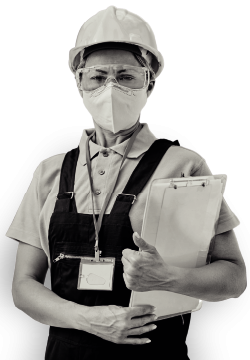Why Working at Heights Training Matters in Durban

Durban’s booming construction sector—from coastal high-rises to industrial developments—means working at heights has become an everyday reality. Yet, with height comes risk: falls remain one of the leading causes of workplace injuries and fatalities. Whether you're erecting scaffolding on Umhlanga Ridge or performing maintenance atop a warehouse roof in Riverhorse Valley, knowing how to stay safe isn’t optional—it’s essential.
That’s where accredited training comes in. Proper working at heights education ensures employees understand legal responsibilities, hazard controls, equipment usage, and rescue procedures—all while boosting site safety and reducing liability.
The Scope of Working at Heights Hazards
Falls can happen from seemingly low levels—ladders, rooftops, or platforms—and still cause serious injuries or death. Common hazards include:
-
Unprotected edges and openings
-
Unstable surfaces (wet, uneven, or slippery)
-
Inadequate equipment use
-
Falling objects
-
Poor weather conditions (rain, wind)
-
Scaffolding failure and misuse of lifts
These risks are detailed in South African regulations such as the OHS Act and Construction Regulation 10, which mandate site-specific fall protection plans, medical fitness checks, training, equipment inspection, and rescue protocols.
What Does Working at Heights Training Typically Cover?
Training programs—like those offered by OHS Training Africa—address both theory and hands-on practice across these critical areas:
-
Legislation & Standards: Understanding the Occupational Health & Safety Act, Construction Regulation 10, and SANS/EN safety standards.
-
Risk Assessment & Site Plans: Building and executing site-specific fall protection and rescue plans.
-
Equipment Use & Inspection: Harnesses, lanyards, lifelines, guardrails, toe boards, scaffolds, ladders, and mechanical lifts.
-
Practical Training: Anchor selection, system assembly, knot tying, rescue drills, and rescue from height for fallen workers.
-
Medical Fitness Regulations: Screening for vision, cardiovascular health, neurological conditions, and physical capability.
-
Rescue Techniques: Rapid fall-arrest retrieval methods according to rescue plan requirements.
-
Weather & Environmental Awareness: Adapting practices based on conditions .
This comprehensive blend ensures participants are not just compliant—they’re competent and confident.
Local Choices: Where to Get Trained in Durban
Several reputable providers operate in Durban:
-
OHS Training Africa in Riverhorse Valley offers accredited Working at Heights Rescue and scaffolding and rescue-driven courses
-
SA SMTS Pty Ltd, a national training provider, runs 1‑day courses in Durban focused on regulation compliance and risk awareness.
-
EMCARE Training Academy delivers Durban-based sessions ranging from basic working at heights to portable ladder and scaffold training .
-
Striving Minds Academy and others offer flexible options—on-site or classroom, 1–5 days, accredited by TETA, CETA, and the Department of Labour.
Participants can choose between brief awareness courses (~1 day) or full rescue and risk-based extensions (3–4 days), depending on their roles.
If you’re searching for working at heights training durban, you’ll find specialized options tailored to Durban’s unique environment. OHS Training Africa, for instance, delivers a detailed “Working at Heights Rescue Course” right in Riverhorse Valley. This hands-on program covers fall arrest equipment, rescue planning, knot techniques, and casualty lowering—all led by certified instructors .
Benefits of Investing in Durban-Based Training
-
Regulatory Compliance
Adhering to South African laws (such as CR 10) helps companies avoid penalties and liability issues. -
Improved Site Safety
Competent employees understand hazards, use gear correctly, and can execute rescue procedures. -
Lower Incident Rates
Sites with trained personnel see fewer falls and near-misses, reducing costs and downtime. -
Employee Confidence & Retention
Workers value training investments—it signals that their safety matters. -
Industry Reputation
Accredited certifications from providers like EMCARE or Striving Minds reflect well on your firm.
Tailoring Training to Durban’s Industry
Durban’s varied industries—construction, warehousing, telecommunication, marine—benefit from bespoke training focus:
-
Construction & Scaffolding
Training includes mobile towers, birdcage scaffolds, ledgers, and bracing. -
Industrial Maintenance
Practices for accessing rooftops and elevated platforms, including ladder safety and lifelines . -
Rescue Readiness
Courses like OHS Training Africa’s rescue program emphasize casualty retrieval and fall protection plans. -
Cherry Picker/AWP Operation
Although separate, sites using aerial lifts may require cherry picker training—ensuring operators can perform inspections and stay alert to environmental hazards.
Beyond the Basics: On‑Site Mentoring & Refresher Training
Certification doesn’t end the journey. Best practices include:
-
Site-specific briefings before each project
-
Refresher courses every 2–3 years or after legislative changes
-
Mock rescue drills to test response systems
-
Continuous hazard audits and equipment checks
These repeat engagements help embed a strong safety culture beyond initial training.
Cost Considerations in Durban
Typical investment ranges include:
-
1‑Day Awareness Course: Roughly ZAR R1,000–R1,500 per delegate.
-
3–4 Day Courses (with Rescue): Between R1,700–R2,000+ per day
While costs vary, the ROI from preventing falls and building a safety-first culture is significant.
Getting Started: How to Enroll
-
Identify Needs: Role requirements—awareness vs. rescue capability.
-
Research Providers: Compare accreditation, experience, and location.
-
Confirm Dates: Ensure availability at Durban training centers.
-
Plan Logistics: Book spaces, medical screenings, and equipment checks.
-
Ensure Follow‑Up: Arrange refresher sessions and on-site compliance checks.
Conclusion: Elevate Safety with Working at Heights Training in Durban
In Durban’s dynamic environment, working at heights training isn’t just good practice—it’s imperative. From legal compliance to saving lives, its importance cannot be overstated. Whether you need a basic 1-day awareness program or a comprehensive rescue course, Durban offers robust, accredited options.
If you’re ready to reduce risk, bolster competency, and demonstrate your commitment to workplace safety, now is the time. Invest in working at heights training durban today—and elevate your team’s safety standards.








